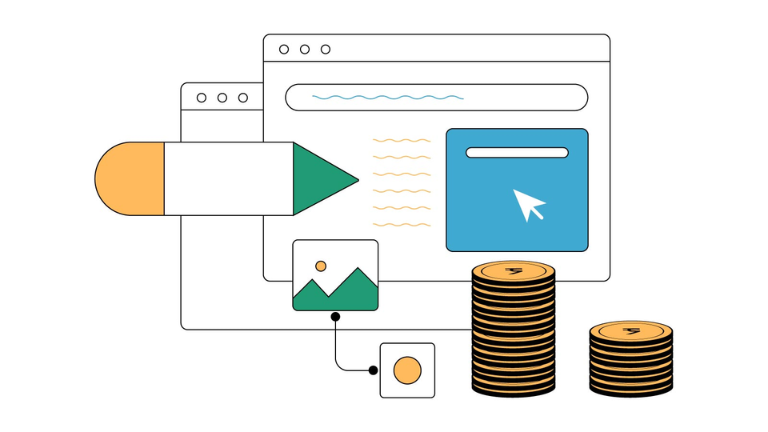Cross-Platform Development: Best Practices for Building High-Performance Apps
What is Cross-Platform Development?
Cross-Platform Development enables developers to build mobile, web, and desktop applications using a single codebase. Instead of developing separate native apps for Android, iOS, and other platforms, a Cross-Platform Development approach saves time, effort, and resources while ensuring a consistent user experience.
Key Benefits of Cross-Platform Development:
✔ Reduces development costs – One codebase means less work and lower expenses.
✔ Speeds up development time – Faster delivery by avoiding duplicate efforts.
✔ Simplifies maintenance – Bug fixes and updates apply universally.
✔ Ensures a consistent UI/UX – Users get the same experience across different devices.
Popular Cross-Platform Development frameworks like Flutter, React Native, Xamarin, and Qt allow developers to create apps that perform almost like native applications while using familiar programming languages such as JavaScript, Dart, C++, and C#.
Best Practices for Cross-Platform Development
To maximize the efficiency of Cross-Platform Development, follow these best practices:
1. Choose the Right Cross-Platform Framework
Your Cross-Platform Development success depends on selecting the best framework for your project.
Key Considerations for Framework Selection:
✔ Target Platforms – Are you building for mobile, desktop, or both?
✔ Performance Requirements – Do you need native-like performance or a hybrid approach?
✔ Development Team Expertise – Which programming languages does your team specialize in?
Popular Cross-Platform Development Frameworks:
🚀 Flutter (Dart) – Best for visually rich UI applications with hot reload for rapid updates.
🚀 React Native (JavaScript) – Great for web developers transitioning into mobile development.
🚀 Qt (C++) – Ideal for hybrid mobile, web, and desktop applications.
🚀 Xamarin (C#) – Microsoft-backed framework for shared code across platforms.
Each Cross-Platform Development framework has its own advantages, so align your choice with your project’s requirements and team strengths.
2. Adopt a Platform-Agnostic Design Approach
A common mistake in Cross-Platform Development is designing for one platform first and adapting later. Instead, follow these best practices:
✔ Use responsive design principles to ensure adaptability across multiple operating systems.
✔ Maintain a single UI codebase while accommodating platform-specific features.
✔ Leverage design tools like Figma and Sketch for consistent branding.
By focusing on platform-agnostic UI/UX, Cross-Platform Development delivers apps that feel native without excessive platform-specific customization.
3. Write Modular and Reusable Code
A structured, modular approach makes Cross-Platform Development scalable and maintainable.
Best Practices for Writing Modular Code:
✔ Follow DRY (Don’t Repeat Yourself) principles to minimize code duplication.
✔ Organize code into shared modules while keeping platform-specific code separate.
✔ Use object-oriented programming languages like C++, Java, or C# for high-performance applications.
With modular Cross-Platform Development, developers can easily update features without affecting the entire app.
4. Optimize Performance for Multiple Platforms
One challenge of Cross-Platform Development is ensuring fast, responsive performance across devices.
Performance Optimization Techniques:
✔ Use native code for performance-intensive tasks.
✔ Minimize third-party dependencies to reduce app size and load times.
✔ Optimize image rendering, animations, and background processes to prevent lag.
Use profiling tools like Xcode Instruments and Firebase Performance Monitoring to identify performance bottlenecks and improve efficiency.
5. Implement a Robust Cross-Platform Testing Strategy
Since Cross-Platform Development involves multiple operating systems, testing is critical.
Key Testing Methods:
✔ Unit Testing – Verifies individual components work as expected.
✔ Integration Testing – Ensures smooth interaction between app modules.
✔ Cross-Platform Testing – Uses tools like Appium and BrowserStack to test apps on iOS, Android, and desktop.
Automated testing in Cross-Platform Development reduces bugs, improves stability, and ensures a seamless user experience.
6. Automate Deployment with CI/CD Pipelines
A strong CI/CD (Continuous Integration and Deployment) pipeline accelerates Cross-Platform Development by automating builds, testing, and deployment.
Best CI/CD Tools for Cross-Platform Development:
🔹 Bitrise – Great for mobile automated testing and deployment.
🔹 GitHub Actions – Automates builds, testing, and deployments.
🔹 CircleCI – Ensures code quality and fast updates.
CI/CD pipelines in Cross-Platform Development enable faster releases, better consistency, and early bug detection.
7. Stay Updated with Platform-Specific Changes
Even with Cross-Platform Development, platforms frequently update their APIs, security policies, and UI guidelines.
How to Stay Updated:
✔ Monitor OS updates to ensure compatibility.
✔ Update dependencies regularly.
✔ Follow UI/UX guidelines for Android, iOS, and macOS.
✔ Engage with developer communities to stay ahead of industry trends.
By keeping up with changes, Cross-Platform Development projects remain functional, secure, and competitive.
Challenges in Cross-Platform Development
While Cross-Platform Development has many advantages, it comes with challenges:
1. Performance Limitations
❌ Some hybrid apps may not be as fast as native apps.
💡 Solution: Optimize critical functions with native code where needed.
2. Platform-Specific Code Requirements
❌ Some mobile solutions require platform-specific coding for full functionality.
💡 Solution: Use native modules selectively to access device-specific features.
3. Debugging Complexity
❌ Debugging across multiple operating systems can be difficult.
💡 Solution: Use cross-platform debugging tools like React DevTools or Flutter DevTools.
By choosing the right framework and following best practices, developers can overcome these challenges and deliver high-quality Cross-Platform Development solutions.
The Future of Cross-Platform Development
With advancements in Cross-Platform Development frameworks, CI/CD pipelines, and cloud-based testing, building apps for multiple platforms has never been easier.
🚀 Key Takeaways:
✔ Cross-Platform Development reduces time, cost, and effort.
✔ Choosing the right framework is essential for success.
✔ A platform-agnostic approach ensures a consistent UI/UX.
✔ Automated testing and CI/CD pipelines improve efficiency and app quality.
✔ Staying updated with OS changes is crucial for long-term app performance.
As technology continues to evolve, mastering Cross-Platform Development will help developers create scalable, adaptable, and high-performing apps for the future.
💬 What are your thoughts on Cross-Platform Development? Have you used frameworks like Flutter or React Native?





